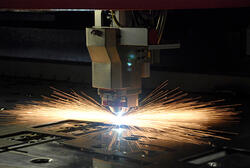True Position Tolerance Standards

Scope:
The procedures outlined in this document apply to preferred manufacturing methods adopted by Dynamic Design & Manufacturing, Inc.
The procedures may affect any and all work centers and are subject to overall part size and material type. (The word "part" refers to the three-dimensional aspects and features of a manufactured detail).
The procedures outlined in this document are to be used for parts that fit all of the following criteria:
- A drawing or part file that is missing tolerances.
- Our standard tolerances can safely be substituted for the tolerances stated on drawing or part file in order to add value to the customer by lowering the manufacturing costs.
- The size of the part is too large to measure using precision instruments.
- The parts' material type, size, and/or thickness is such that closer tolerances may be more difficult to consistently hold, and therefore more costly to manufacture.
Purpose:
- These procedures are intended to aid in establishing conformance to the capability of the process listed above.
- They are intended to streamline the qualification process at these work centers while at the same time provide a more thorough review of the variables. This should provide for a higher success rate in both quality and overall manufacturability.
Procedures:
Drawings and part files will be reviewed on a case-by-case basis at the time of bid. Statements regarding tolerances will be posted in hard copy on the bid response sent to the customer. Examples are shown in inches at maximum material condition and are based on ASME Y14.5M-1994 Dimensioning & Tolerancing and also Mathematical Definitions.
IMPORTANT MATERIAL NOTES:
- Although thickness gauges shown represent Steel and/or Stainless Steel, Aluminum with forms should always be 5052 alloy v. 6061 to avoid fractures and/or breakage.
- Also, note form radii and form relief info is listed as the last two items of each Table category.

Click to submit a Request a Quote or call us at 303-652-0431